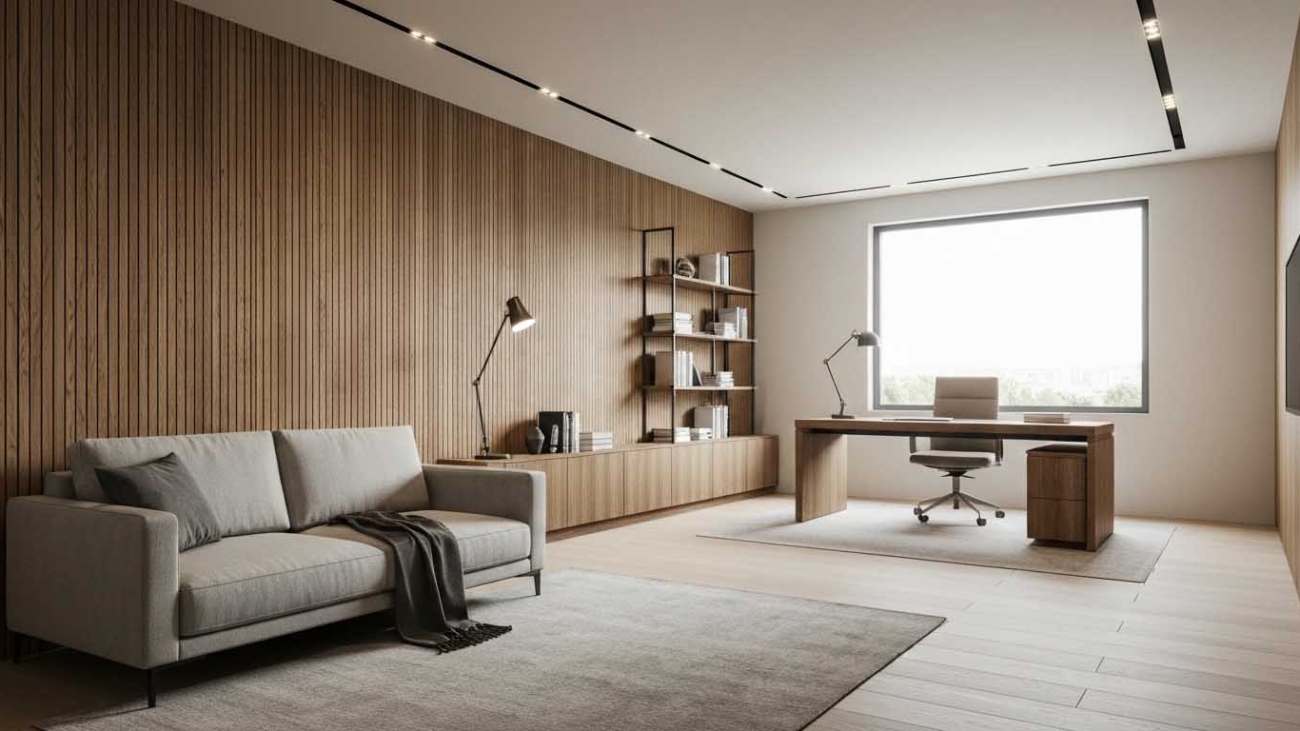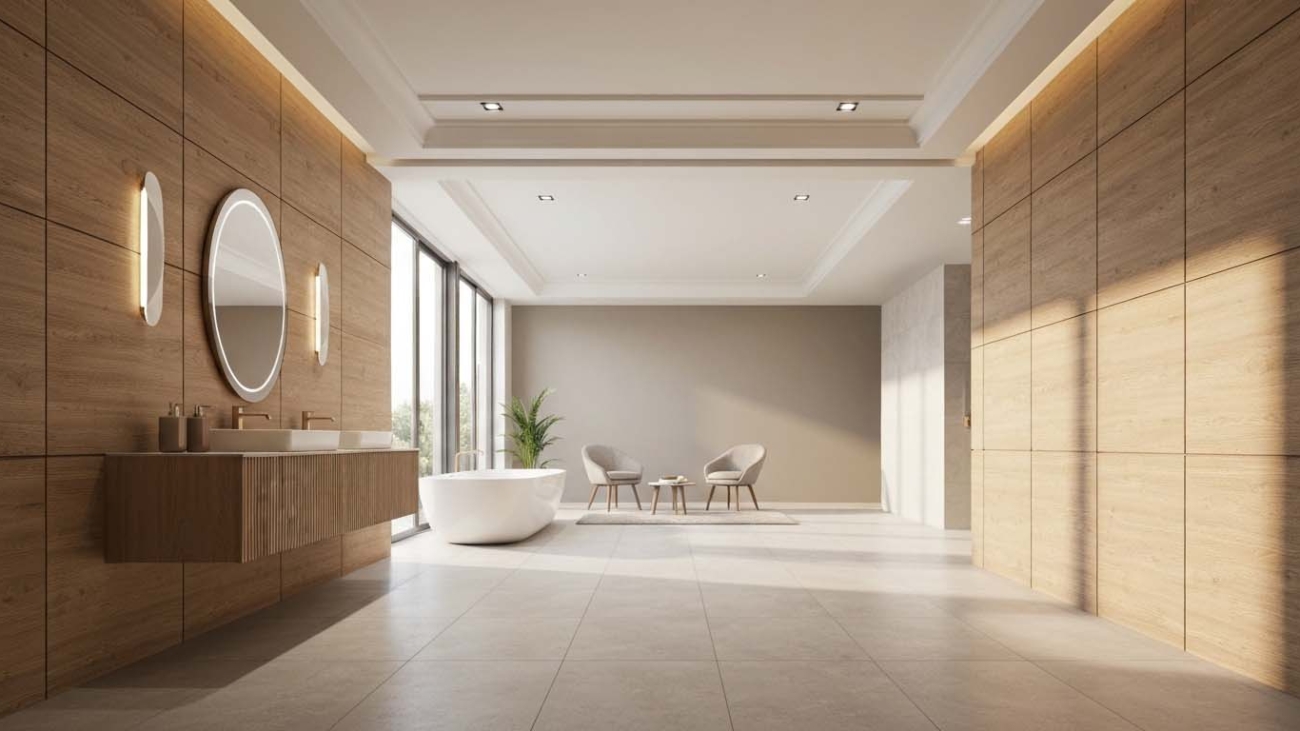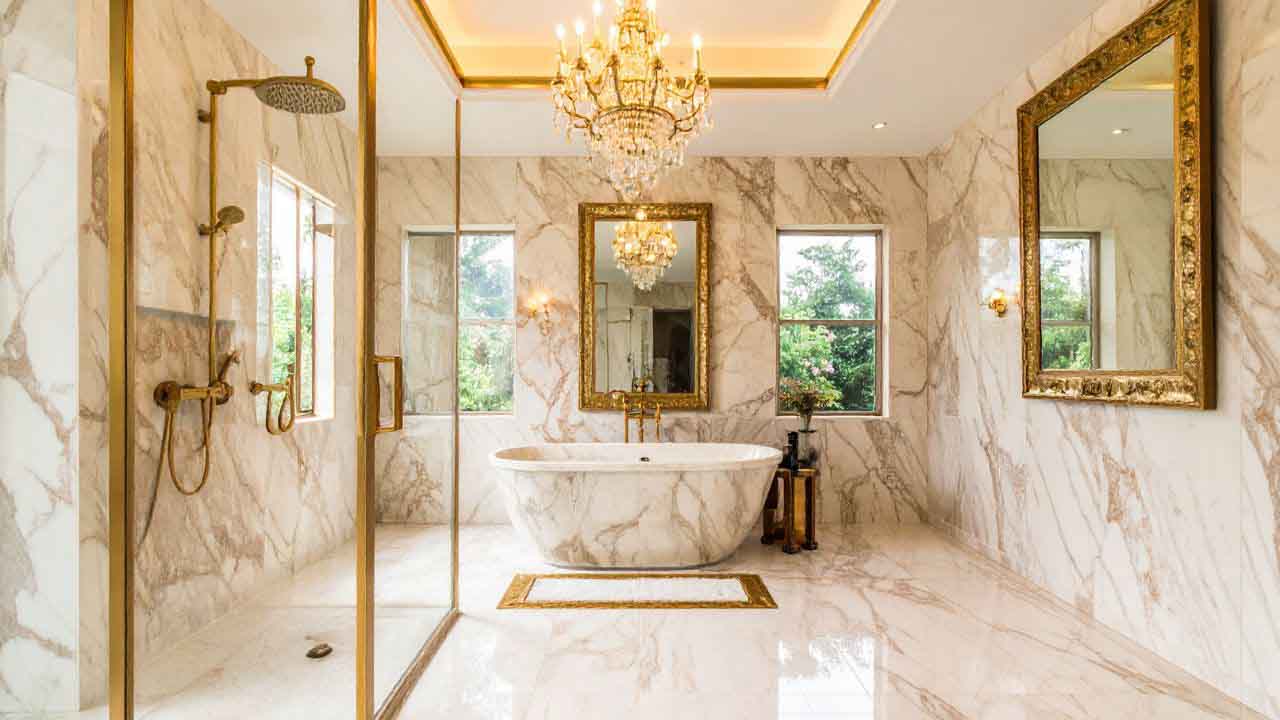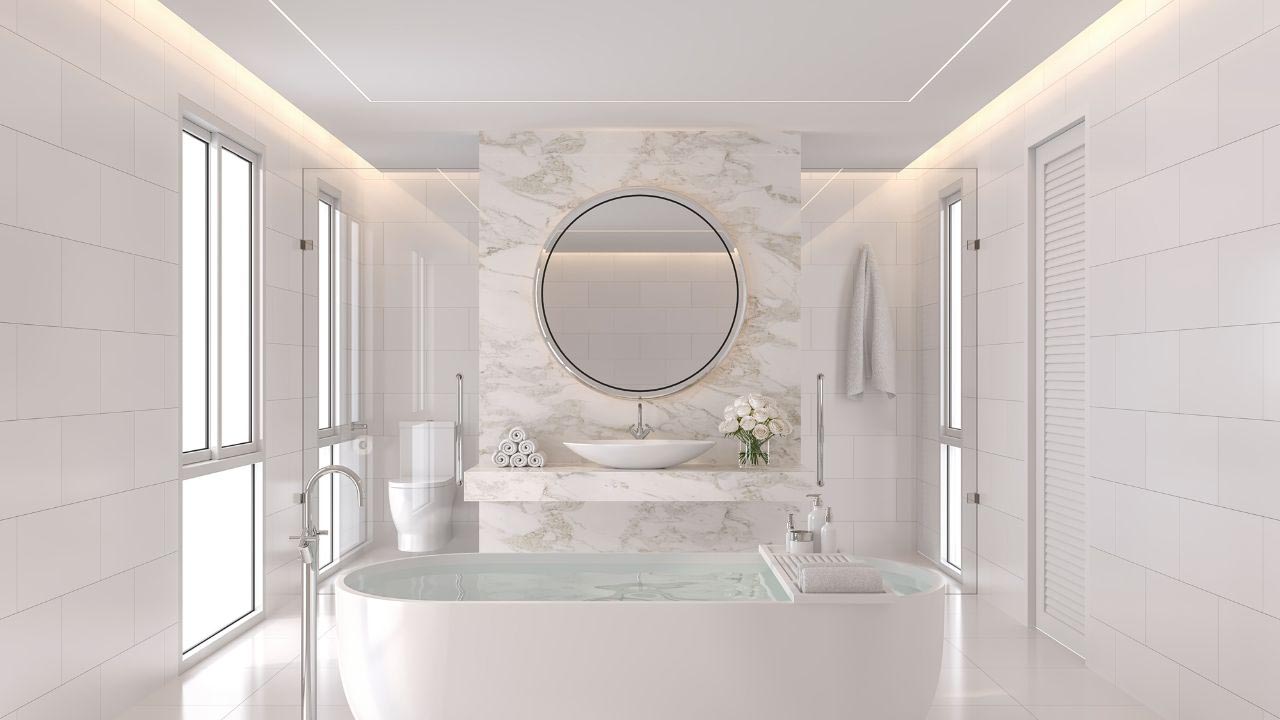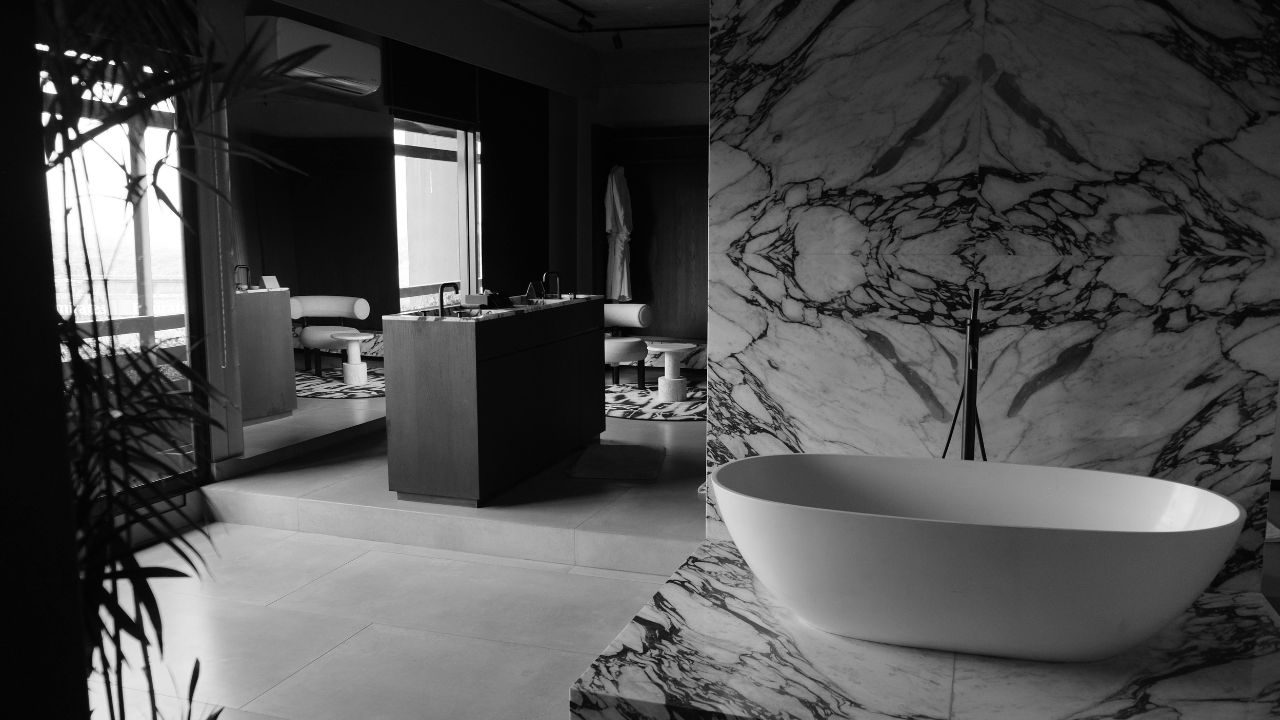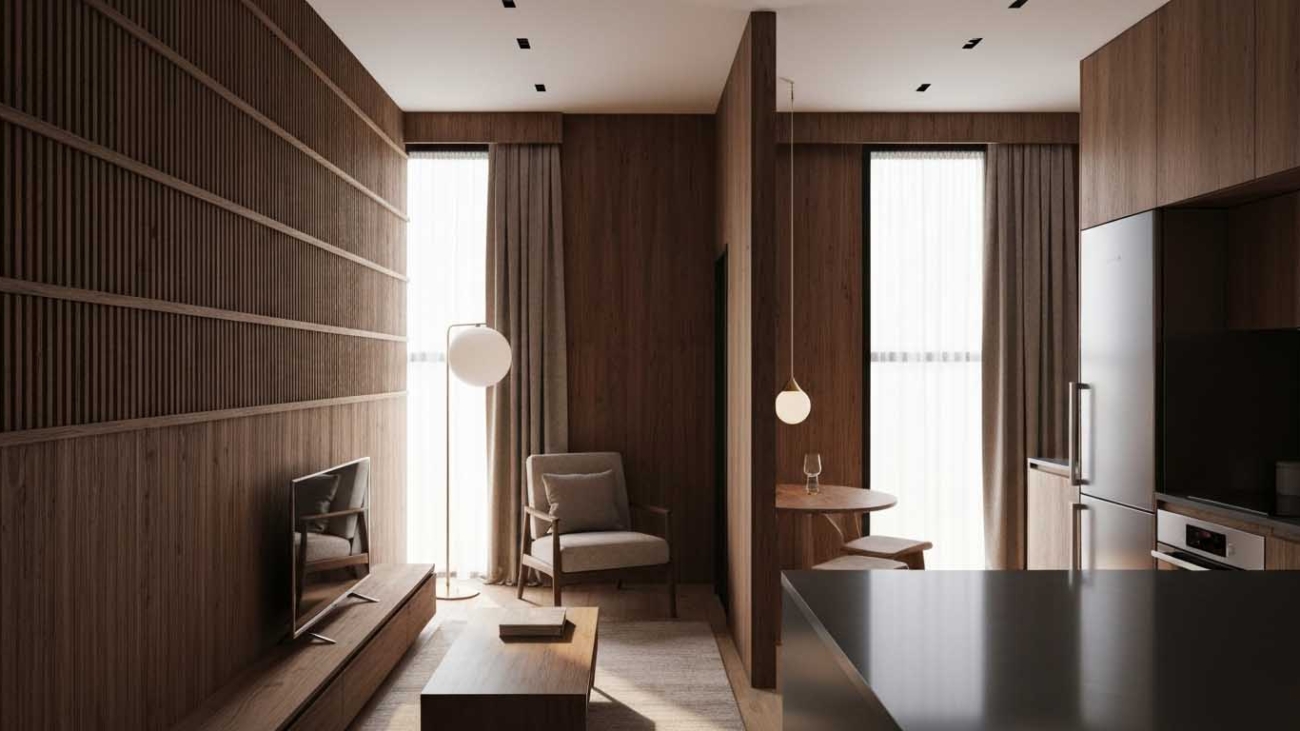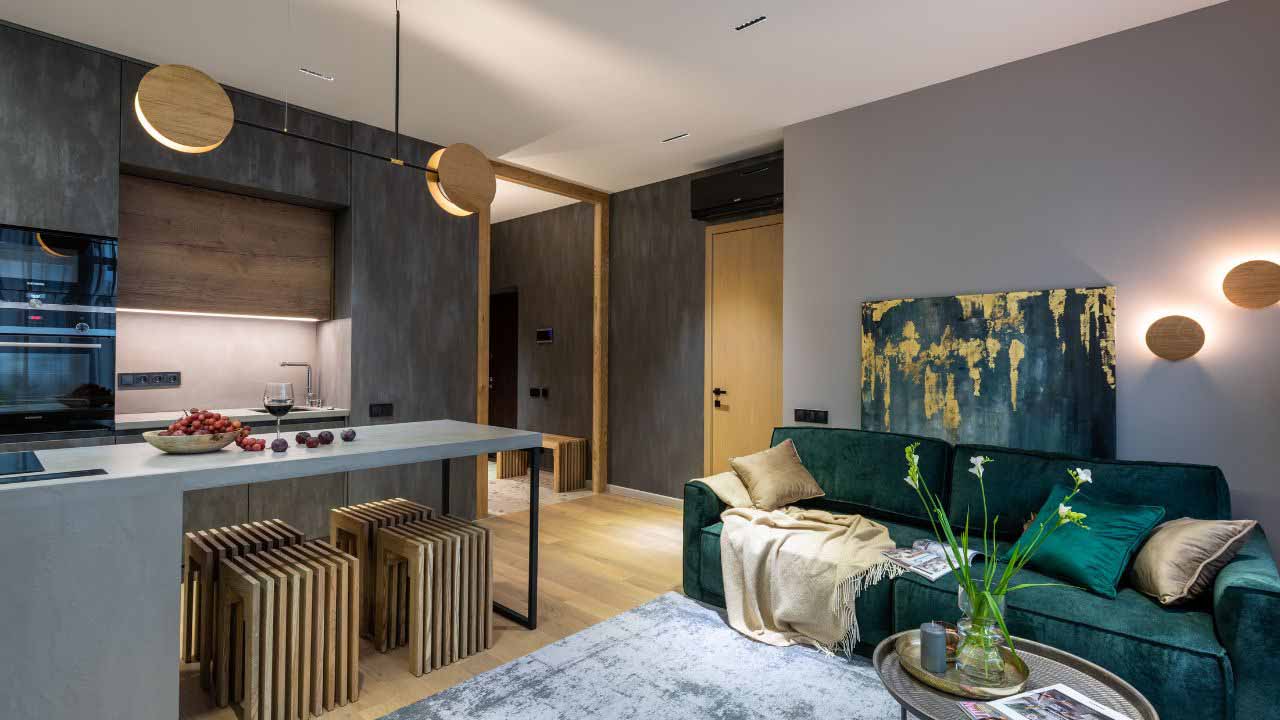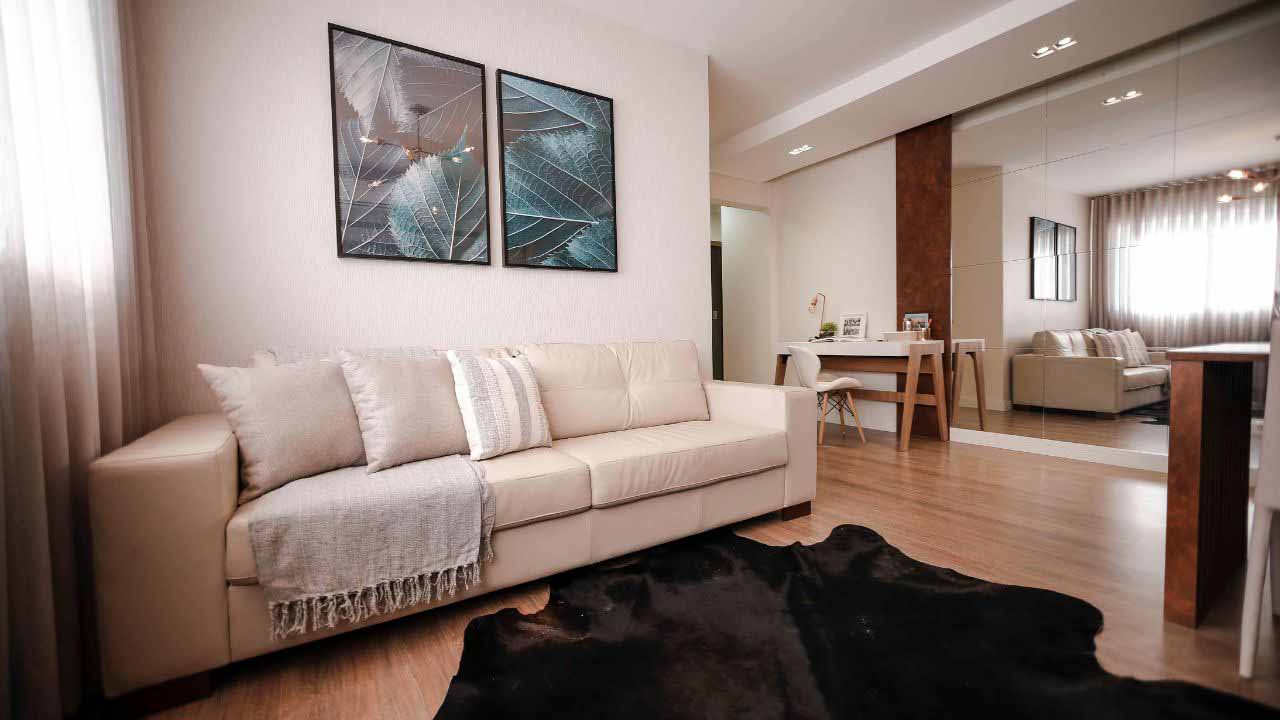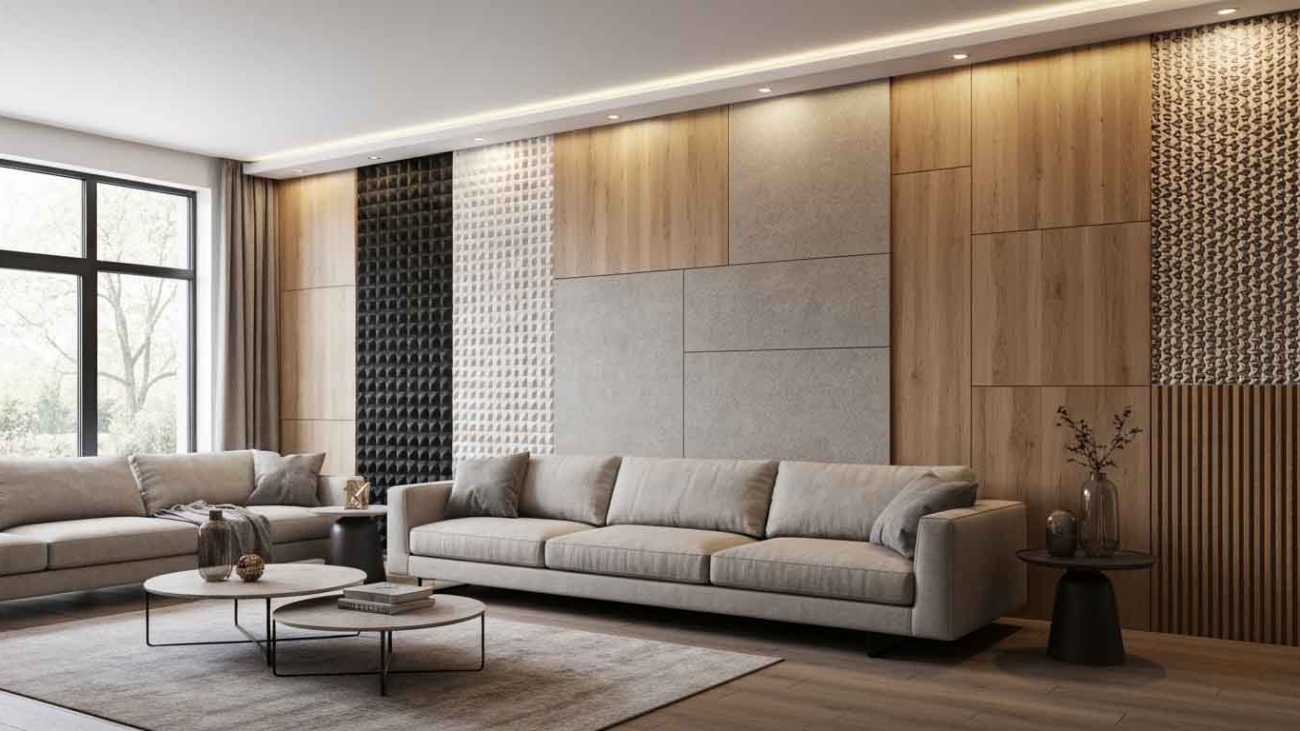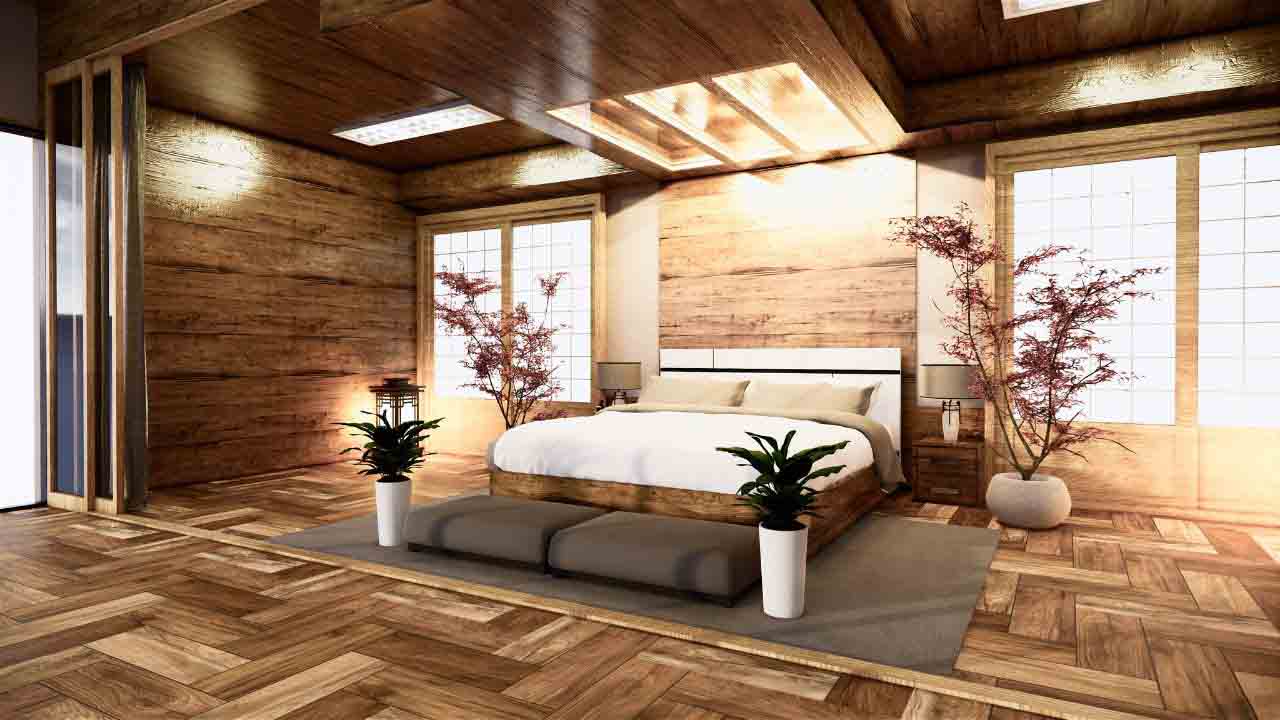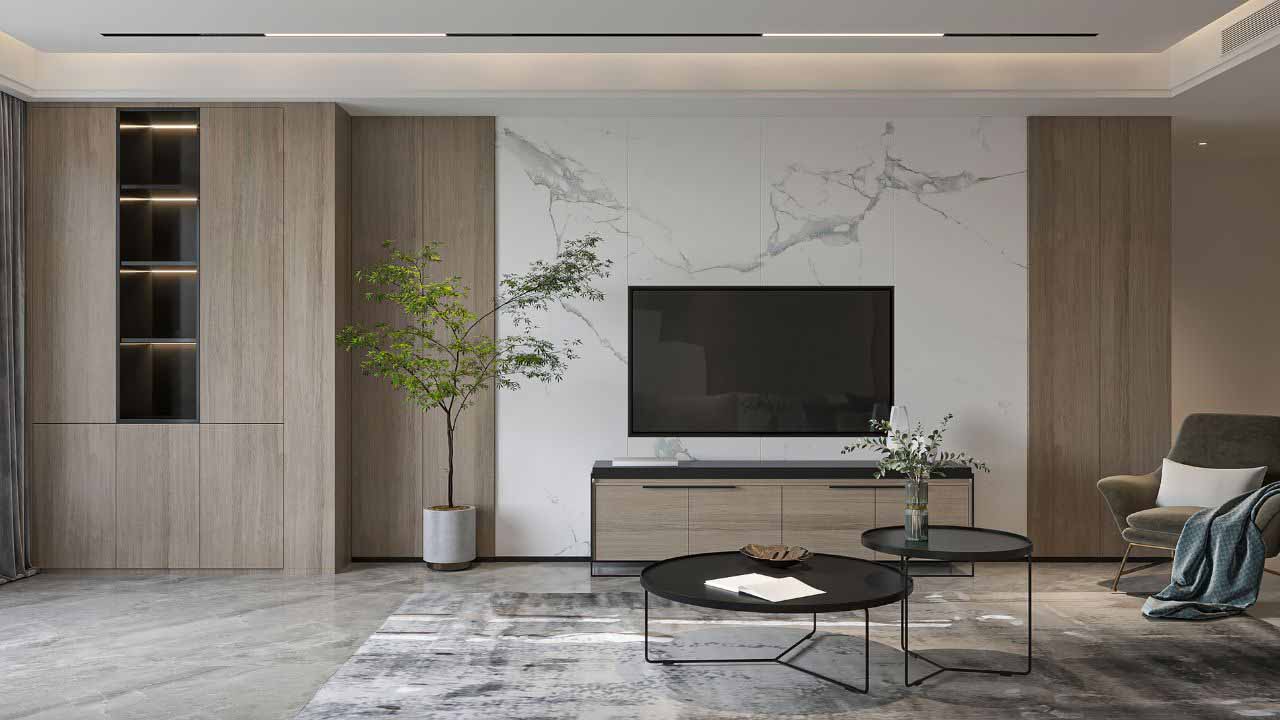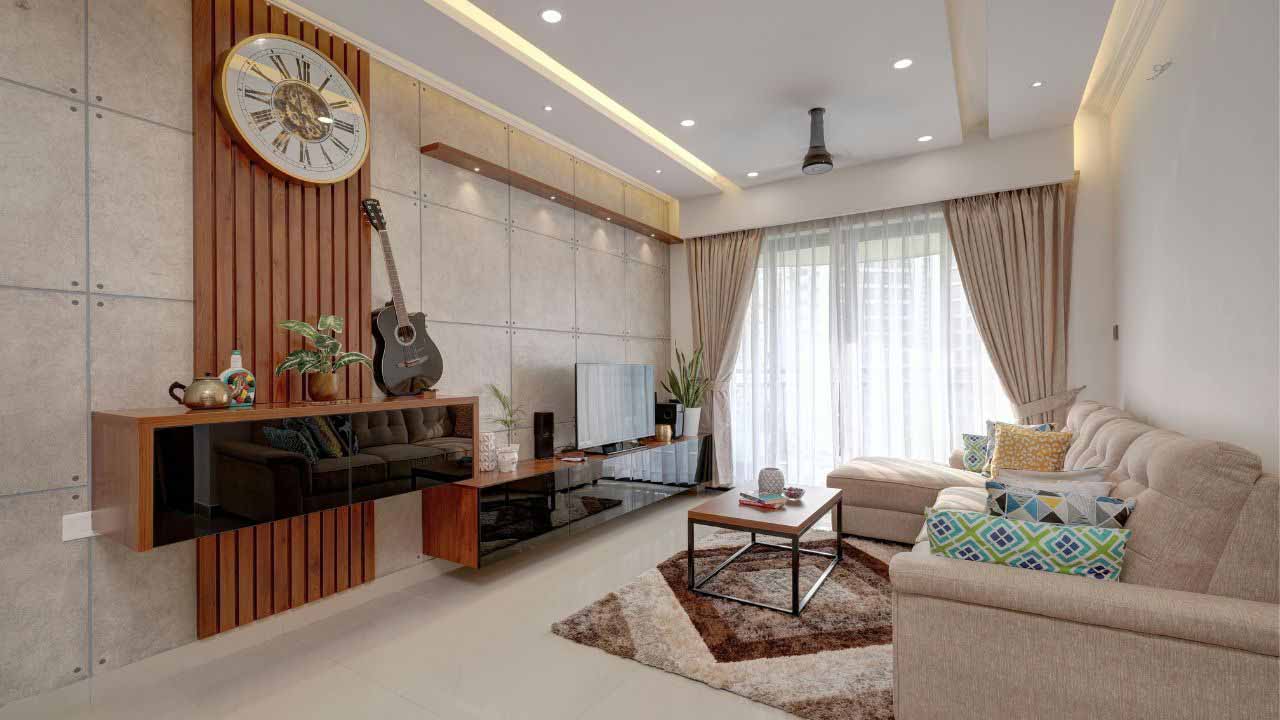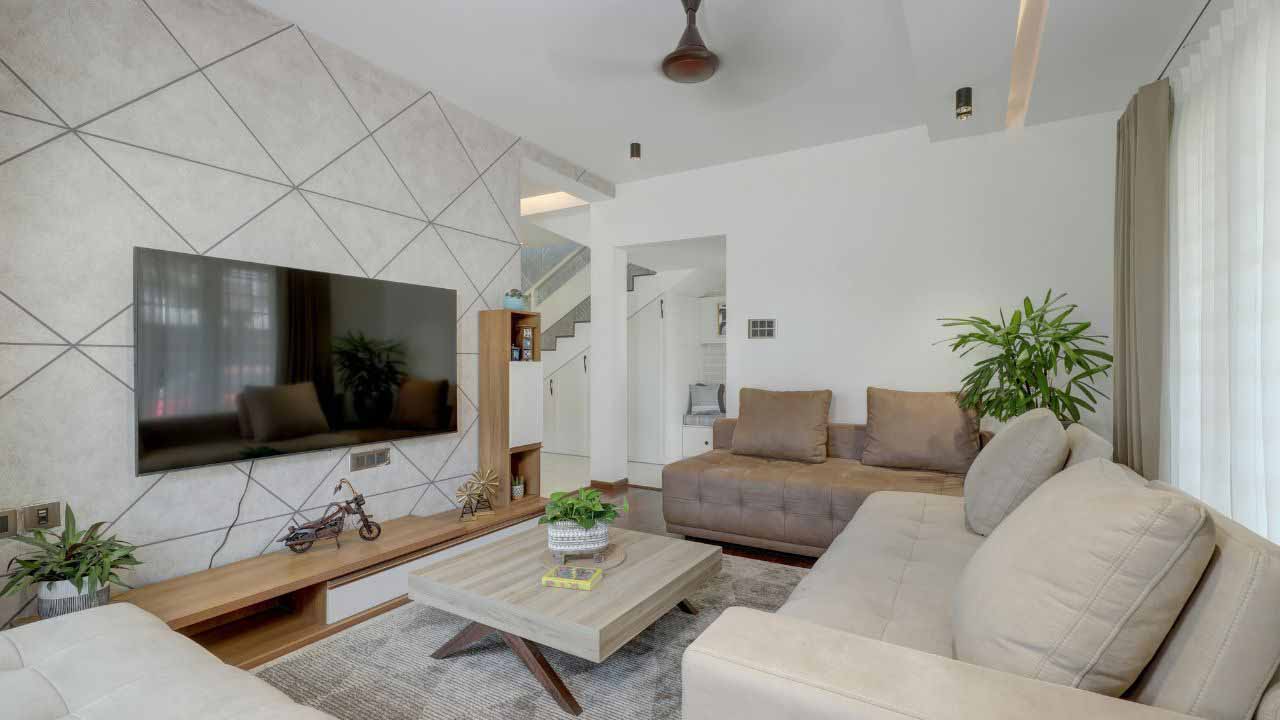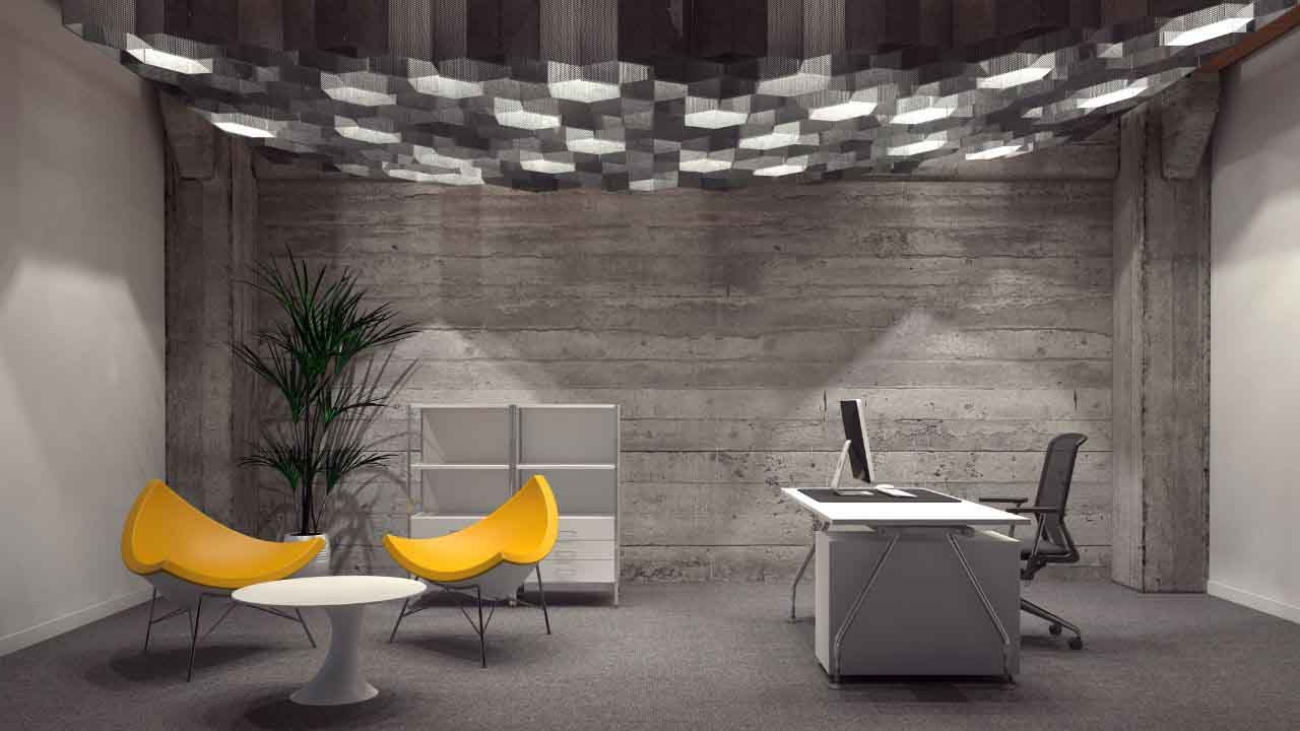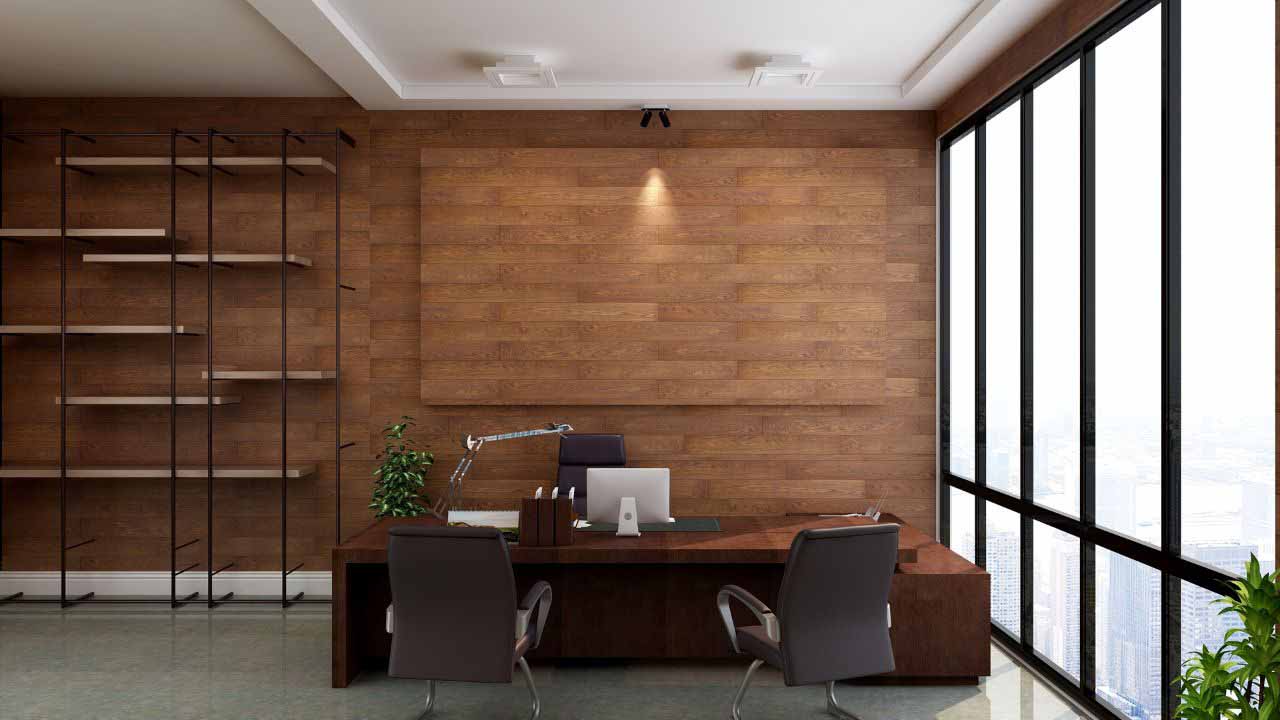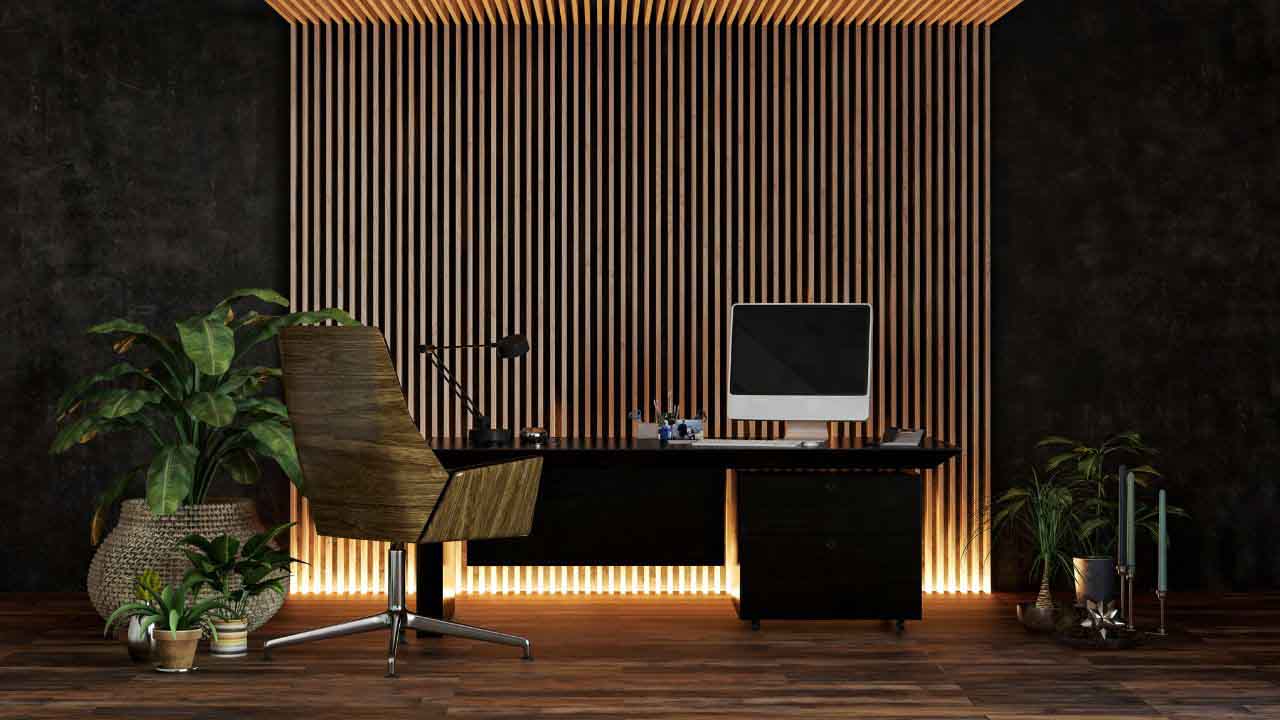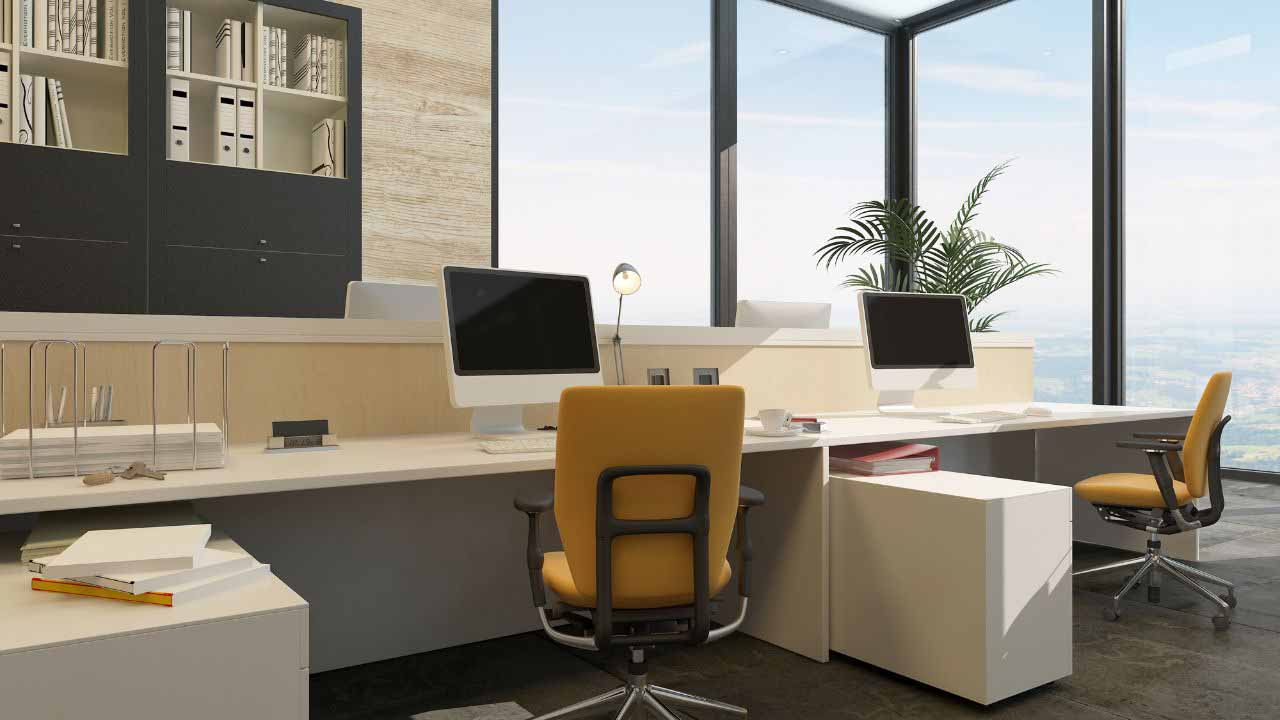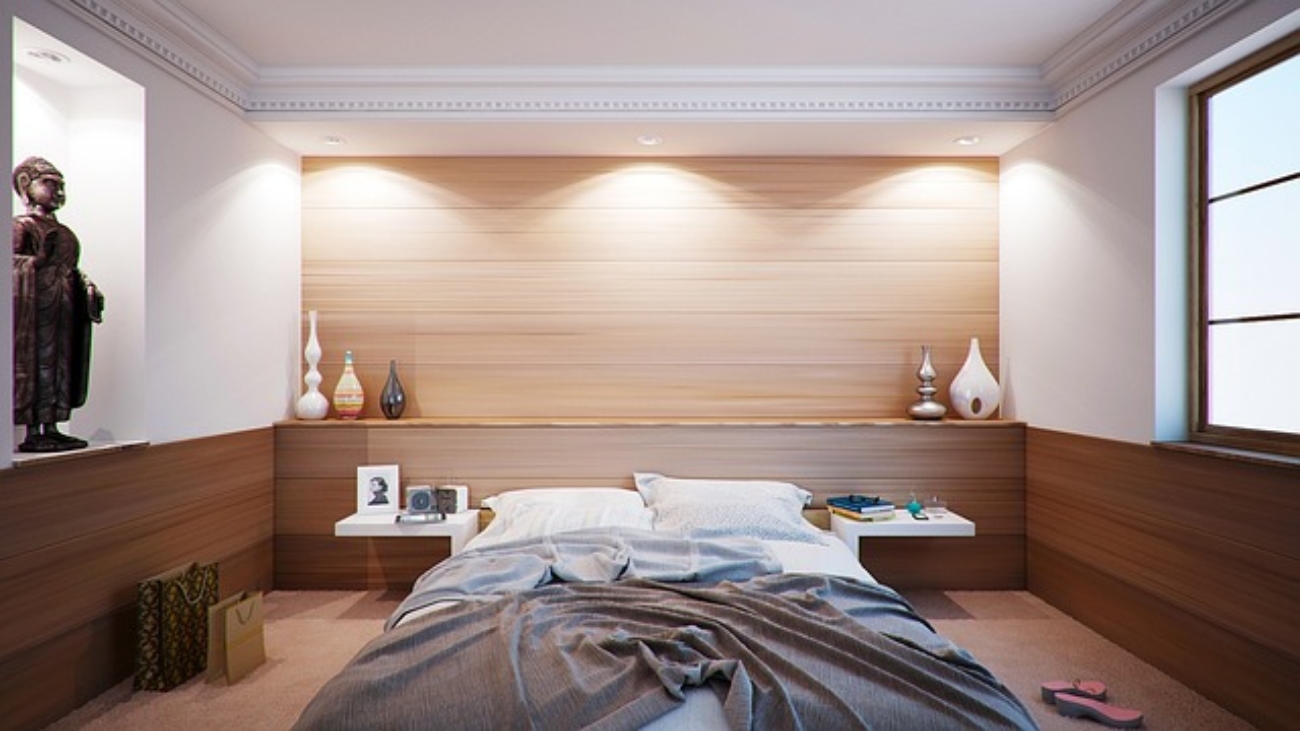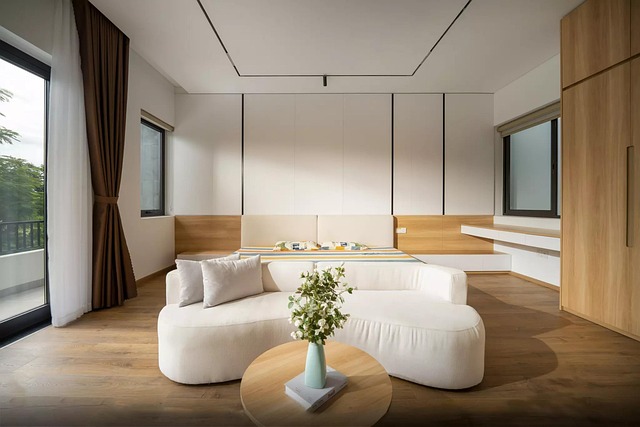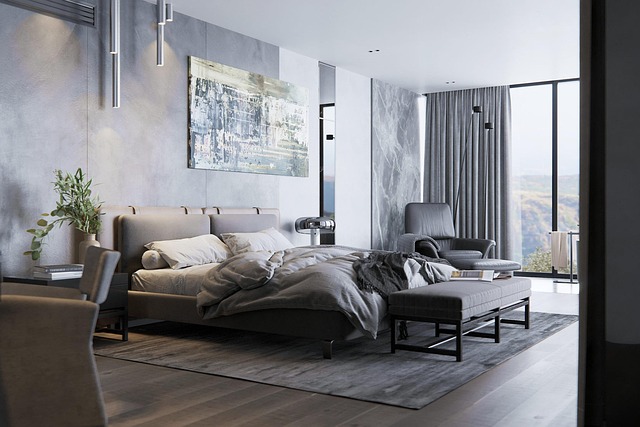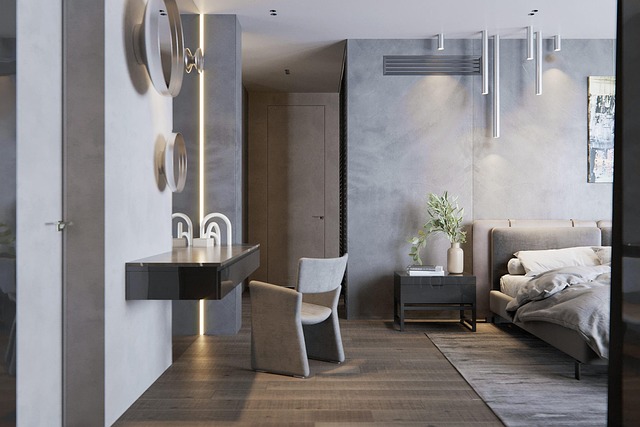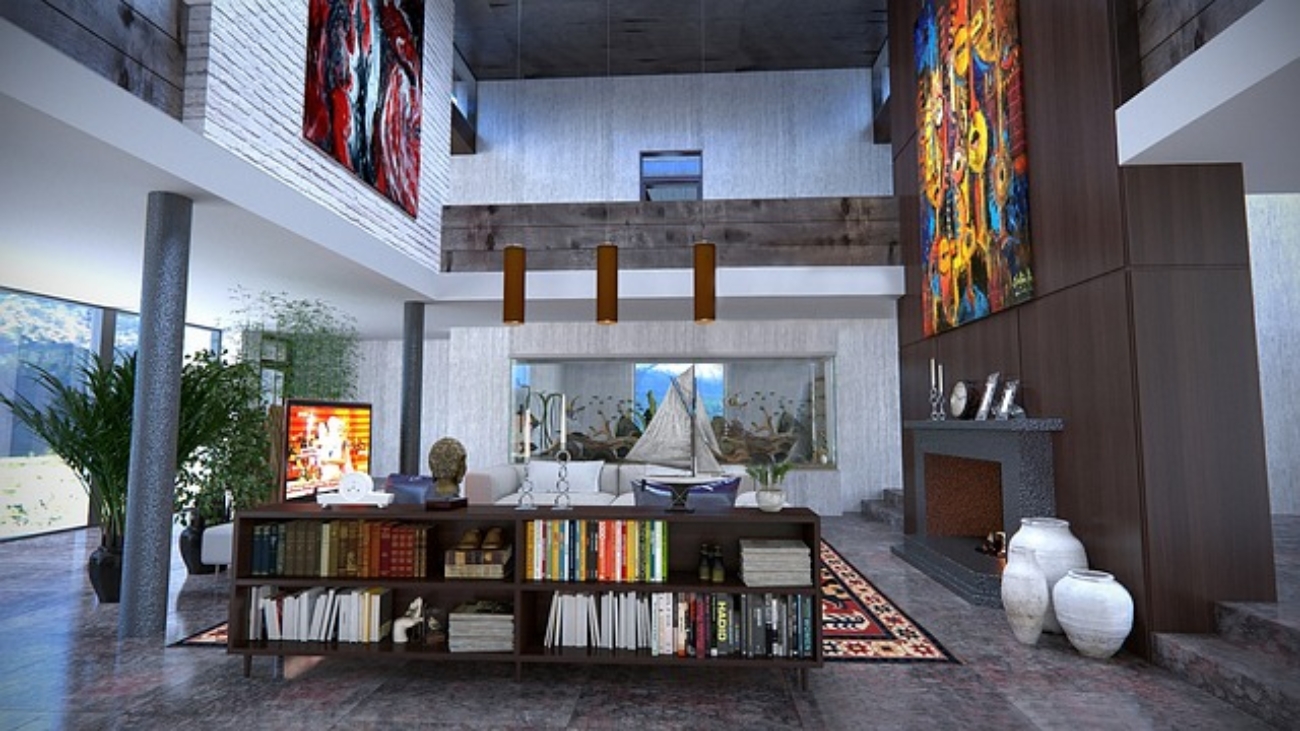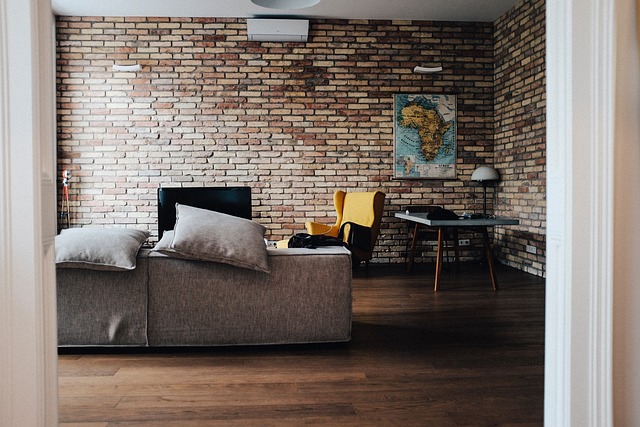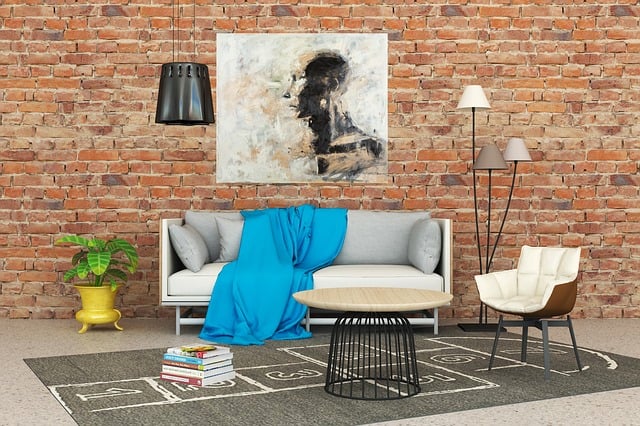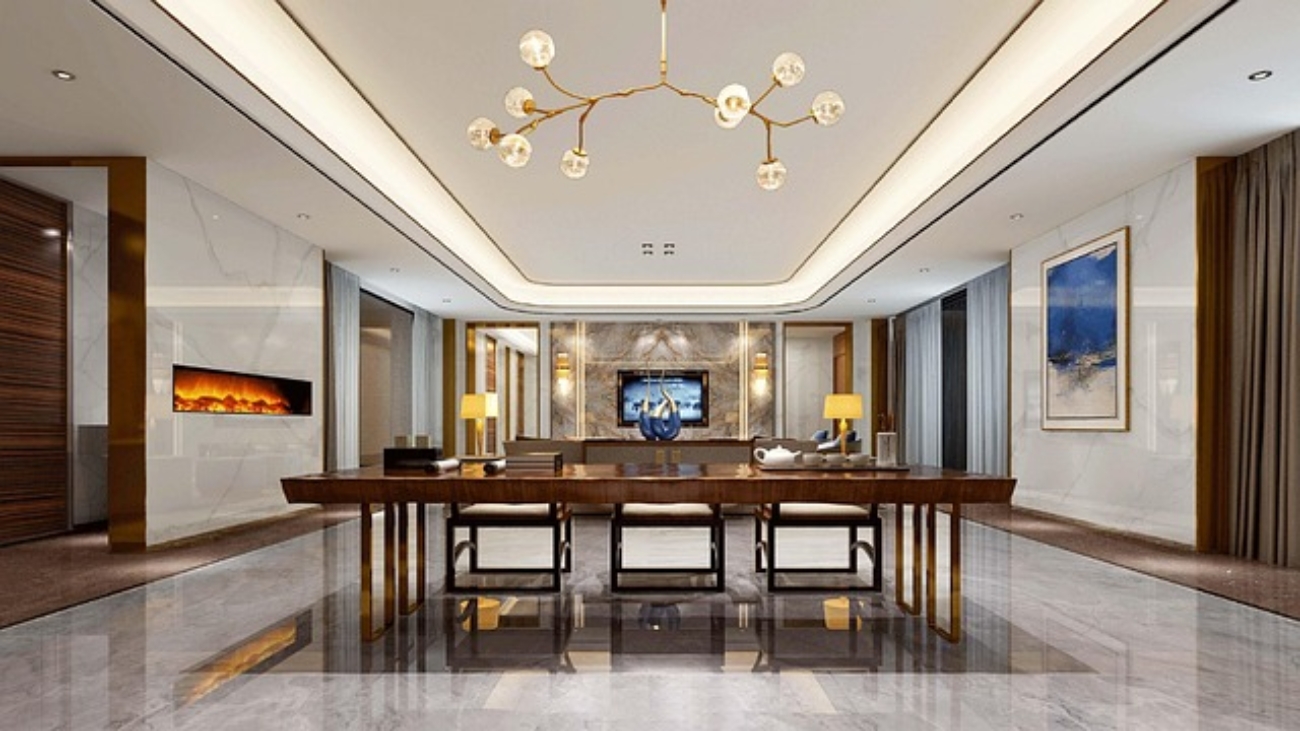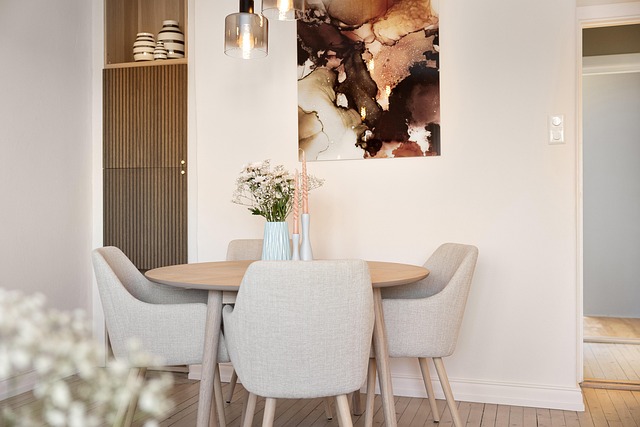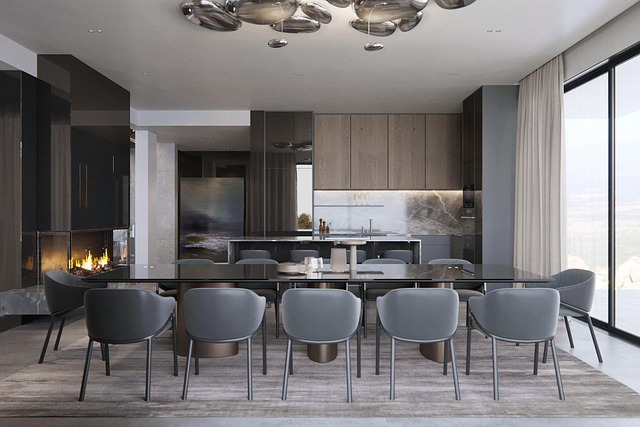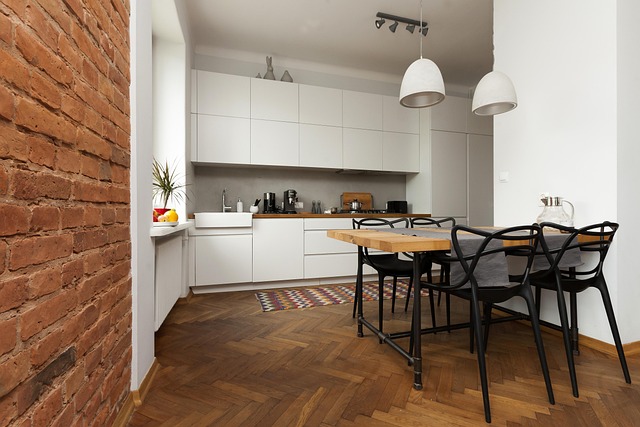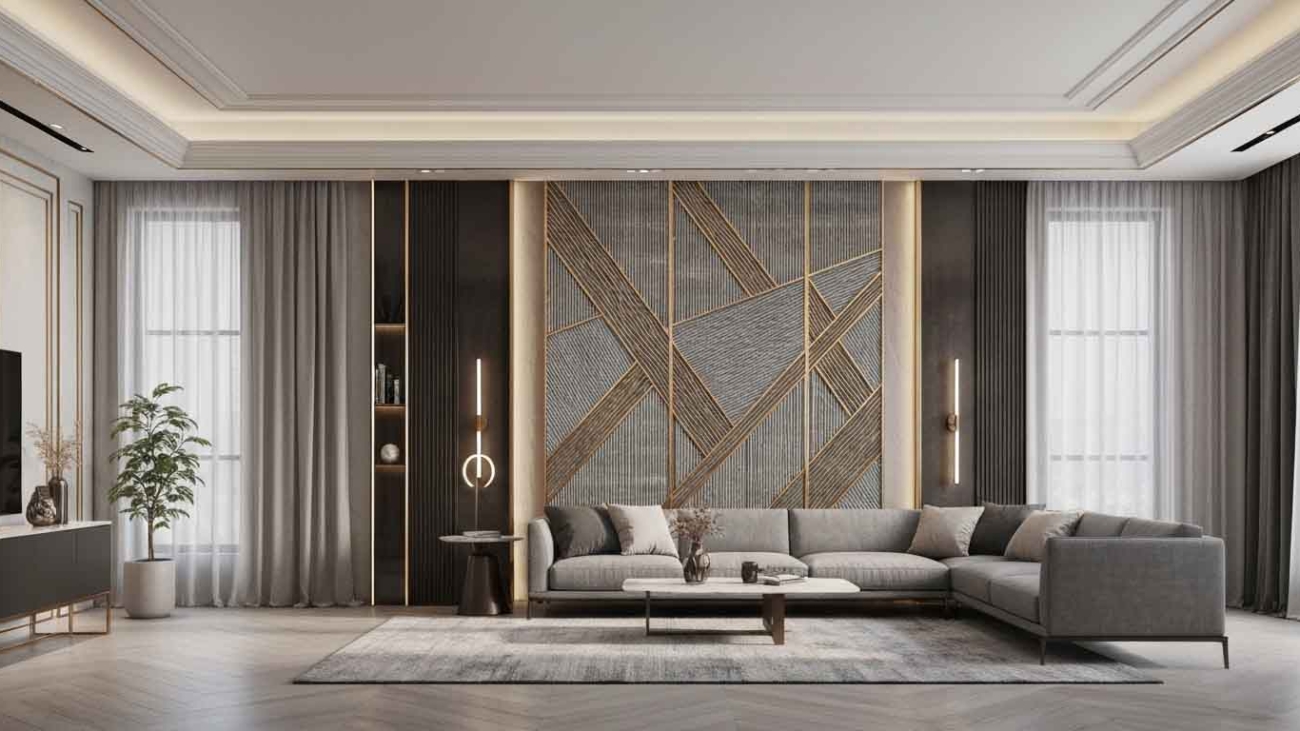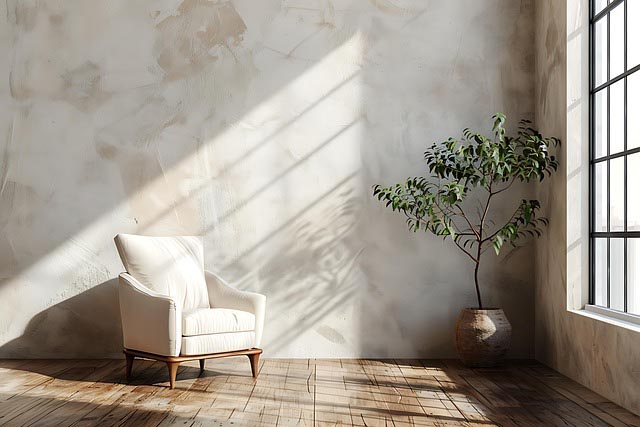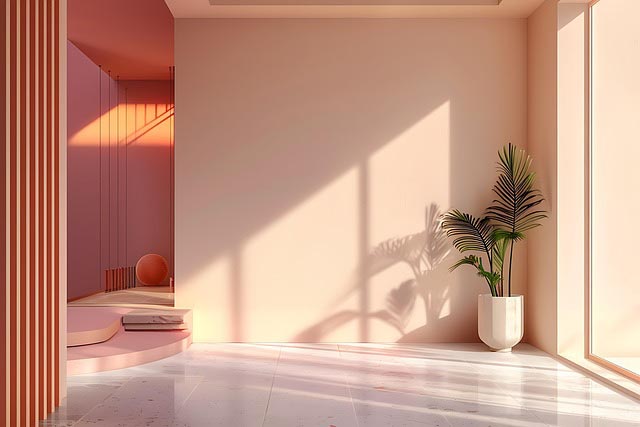Key Highlights
Here are the key takeaways on how wood veneer wall panels are changing home office design:
- Superior Acoustics: Our acoustic wall panels significantly reduce echo and background noise, creating a more focused and productive workspace.
- Stunning Aesthetics: Wood veneer wall panels introduce the natural beauty and warmth of real wood, elevating your interior design.
- Sustainable Choice: We craft our panels from sustainable materials, offering an eco-friendly alternative to solid wood.
- Fully Customizable: Panneli offers tailor-made designs, allowing you to create a unique look that matches your personal style.
- Enhanced Productivity: By improving sound quality and visual appeal, wood wall panels help transform your home office into a professional environment.
Introduction
As work-from-home becomes a permanent fixture for many, creating a quiet and inspiring home office is more important than ever. Distractions from background noise can disrupt your focus and reduce productivity. At Panneli, we believe your walls are a canvas for transformation. That’s why we’re excited to show you how our Wood Veneer Wall Panels are revolutionizing acoustic design. These panels do more than just decorate a room; they create an environment where you can thrive professionally and creatively.
Why Choose Wood Veneer Wall Panels for Home Office Acoustics
Choosing the right materials for your home office is crucial for both function and style. Our Wood Veneer Wall Panels offer the perfect blend of acoustic performance and visual elegance, making them an ideal choice for any modern workspace. These panels are specifically designed to absorb sound, reducing echo and creating a calmer environment.
At Panneli, we specialize in high-quality, customizable wall panels that redefine interiors. Our acoustic panels are crafted from natural wood veneers, providing a sophisticated aesthetic that traditional soundproofing materials lack. They are a practical solution for enhancing your interior design while significantly improving sound quality.
Unmatched Acoustic Benefits for Productive Spaces
A productive space is a quiet space. Unwanted noise can be a major source of distraction, but our acoustic wood panels offer a powerful solution. Designed to manage sound effectively, these panels absorb sound waves, preventing them from bouncing around the room. This reduction in echo and reverb creates a more controlled and pleasant auditory environment.
The secret lies in their construction. The combination of genuine wood veneer over a stable core material helps to dampen noise, turning your chaotic home office into a sanctuary of focus. Our Wood Veneer Wall Panels provide:
- Enhanced Sound Absorption: Minimizes echoes from calls and meetings.
- Reduced Background Noise: Helps block out distracting household sounds.
- Improved Clarity: Makes conversations and audio playback clearer and more professional.
By integrating these modern wall panels into your design, you’re not just making a style statement; you’re investing in your productivity. You can create a space where concentration comes naturally, allowing you to do your best work without interruption.
Distinct Visual Appeal of Modern Wall Panels
Beyond their acoustic properties, Wood Veneer Wall Panels deliver an unparalleled aesthetic appeal. We believe walls are an opportunity for expression, and our panels turn any ordinary room into an extraordinary feature. The natural beauty of the wood grain brings warmth, texture, and a sense of timeless elegance to your home office.
Unlike sterile, purely functional soundproofing materials, our wood wall panels are a design element in their own right. Each panel showcases the unique character of real wood, from the rich tones of Walnut to the clean lines of White Oak. This touch of nature helps create a calming and inspiring atmosphere, which is a key trend in modern interiors that favor biophilic design.
With Panneli, you can transform a blank wall into a dynamic visual statement. Our modern wall panels serve as a stunning backdrop for video calls or a sophisticated feature wall that reflects your professional identity. The warmth of wood makes your workspace feel less like a temporary setup and more like a permanent, well-designed part of your home.
Sustainability and Eco-Friendly Choices
At Panneli, we are committed to both quality and environmental responsibility. Our Wood Veneer Wall Panels are an eco-friendly choice for conscious homeowners and designers. We use a thin slice of real wood applied to a stable core, which means we can replicate the beauty of natural wood while having a much lower environmental impact than solid wood products.
This manufacturing process allows us to maximize the use of every log, reducing waste and preserving our forests. We are dedicated to using sustainable materials without compromising on the luxury and durability you expect. Our commitment to eco-friendly design includes:
- Using responsibly sourced wood veneers.
- Crafting panels from high-quality, sustainable core materials.
- Ensuring a lower environmental footprint compared to traditional wood harvesting.
By choosing our Wood Veneer Wall Panels, you are selecting a product that is not only beautiful and functional but also aligns with sustainable living values. You can create a stunning home office that you feel good about, knowing it was made with the planet in mind.
Understanding Acoustic Design: What Matters Most in a Home Office
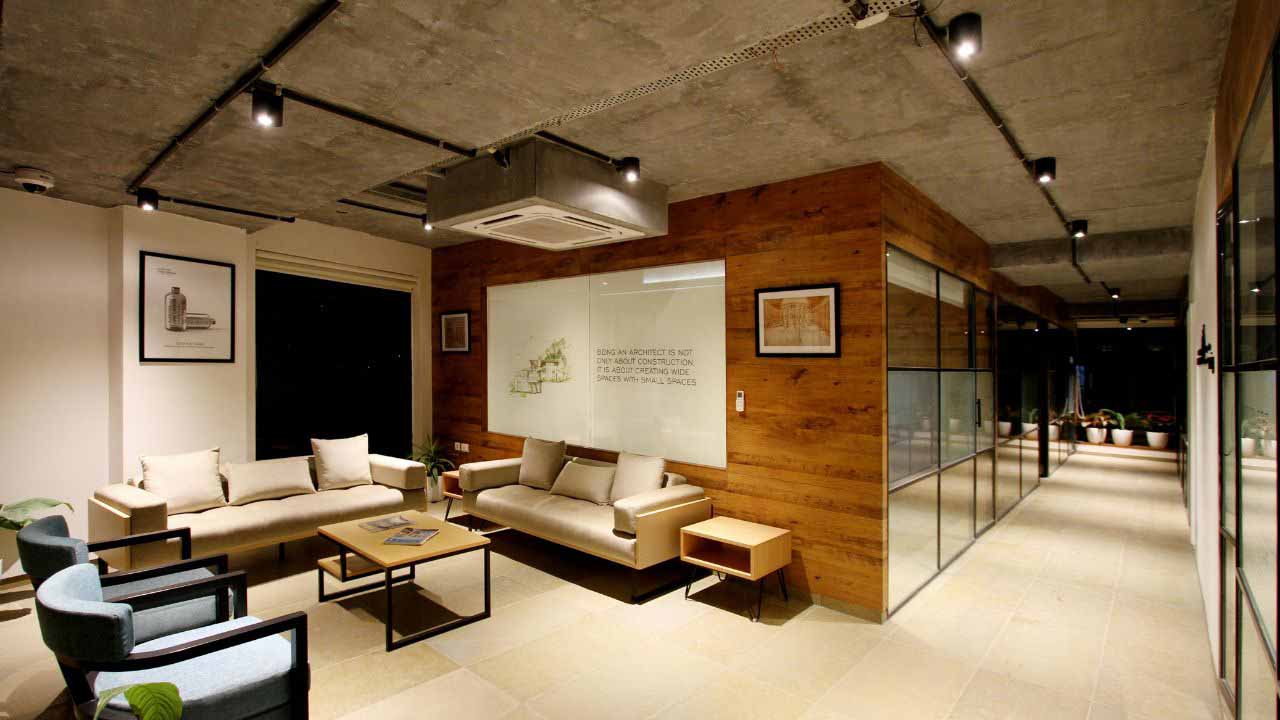
Acoustic design is about controlling how sound travels within a space. In a home office, this means managing sound waves to minimize distractions and improve clarity. Hard surfaces like drywall and glass reflect sound, creating echo and making it difficult to concentrate. The right wall treatments are essential for creating productive spaces.
Acoustic wall panels are designed to absorb sound, stopping it from bouncing around the room. This simple change can dramatically improve the sound quality of your calls and help you focus. We will explore the common noise challenges in a home office and how our Wood Veneer Wall Panels solve them.
Common Noise Challenges and Sound Management
Every home office faces unique noise challenges. From the echo of your own voice on a video call to the sounds of family life in the next room, these distractions can disrupt your workflow. Effective sound management is about identifying these issues and implementing solutions that work for your interior space.
The most common problems within a built environment are reverberation and ambient noise bleed. Our Wood Veneer Wall Panels are designed to tackle these issues head-on. By absorbing sound, they prevent it from reflecting off hard surfaces, creating a more controlled acoustic environment.
Key challenges our modern wall panels help solve include:
- Echo and Reverb: Reduces the hollow sound in rooms with hard surfaces.
- Voice Clarity: Improves how you sound to others on calls.
- Ambient Noise: Dampens background noise from within the home.
How Wood Veneer Wall Panels Enhance Sound Absorption
So, how exactly do our Wood Veneer Wall Panels improve sound quality? The magic is in their multi-layered construction. Unlike a simple flat wall, these acoustic panels are engineered with materials that are excellent at sound absorption. The core of the panel, combined with the natural wood fibers of the veneer, works to trap and dissipate sound energy.
When sound waves hit the panel, they don’t just bounce back. Instead, they penetrate the surface, where their energy is converted into a tiny amount of heat, effectively stopping the echo in its tracks. This process significantly reduces reverberation time in a room, leading to a quieter and more acoustically comfortable space.
Our Wood Veneer Wall Panels are a perfect example of how form can meet function. They are specifically designed for acoustic applications, providing a beautiful and effective way to control noise in your home or office without sacrificing style.
Modern Wall Panels Versus Traditional Soundproof Methods
When people think of soundproofing, they often imagine bulky foam panels or costly construction projects. While these traditional methods can be effective, they often lack aesthetic appeal and are difficult to install. Our modern wall panels offer a superior alternative that blends seamlessly into your interior design.
Wood Veneer Wall Panels provide both acoustic benefits and a high-end finish. Unlike solid wood, which can reflect sound, our engineered panels are designed for absorption. They are also more stable and cost-effective than thick, solid wood panels.
Here’s a quick comparison:
Feature | Modern Wall Panels (Panneli) | Traditional Methods |
Aesthetics | Elegant, high-end wood finish | Often bulky and unattractive |
Installation | Lightweight, easy for DIY | Complex, often requires professionals |
Functionality | Combines acoustic and decorative benefits | Purely functional, can detract from design |
Versatility | Ideal for feature walls and entire rooms | Limited to specific applications |
Exploring Wood Finishes and Species for Veneer Wall Panels
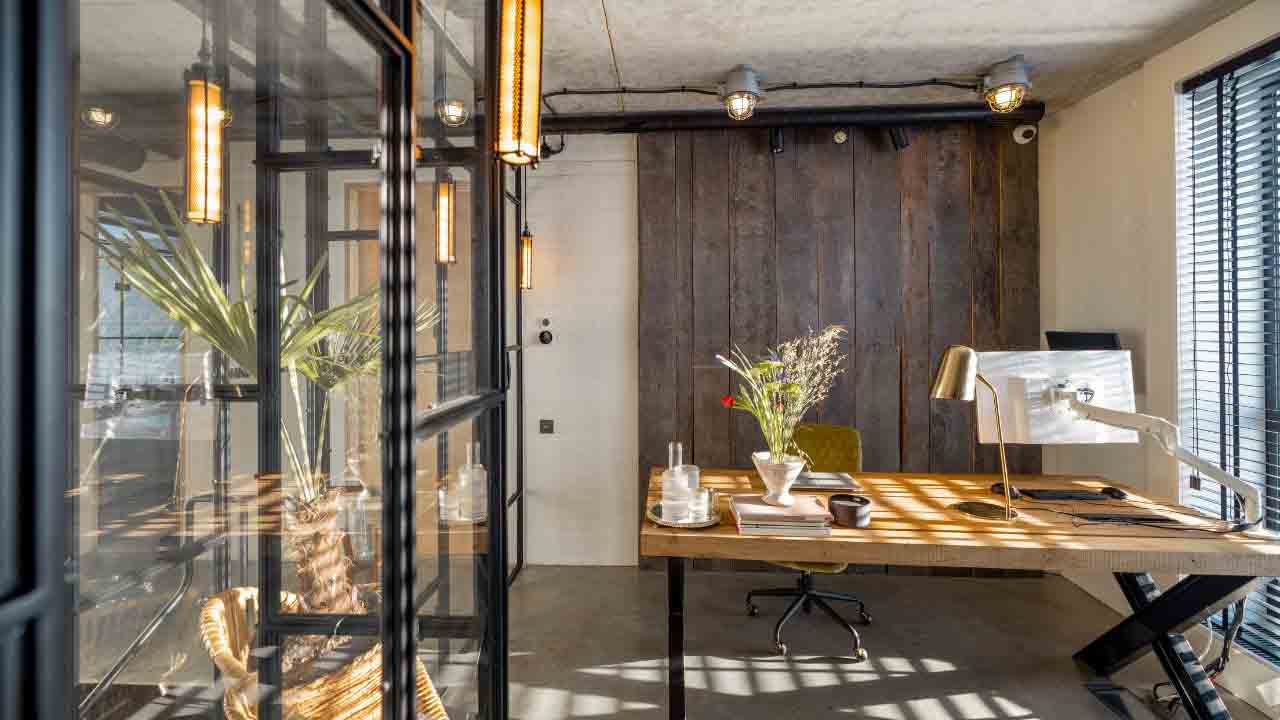
One of the greatest advantages of Wood Veneer Wall Panels is the incredible variety of finishes and species available. At Panneli, we offer a curated selection of real wood veneers that allows you to find the perfect match for your design vision. From the deep, rich tones of Walnut to the bright, airy feel of White Oak, each species has a unique character.
Choosing the right wood finish can completely transform the mood of your home office. Whether you are aiming for a classic, sophisticated look or a modern, minimalist vibe, our veneer wall panels provide the perfect canvas. Let’s look at some popular options to help you get started.
Popular Wood Veneer Species for Home Offices
Selecting the right wood veneer species is key to achieving your desired aesthetic. Each type of wood offers a different natural grain, color, and texture, allowing you to customize your home office to your exact taste. At Panneli, we pride ourselves on offering premium-grade natural wood veneers that bring timeless beauty to any space.
These wood products are chosen for their durability and stunning appearance, ensuring your walls look great for years to come. Whether you want a bold statement or a subtle backdrop, there is a wood species for you.
Here are a few popular choices from our TimberGrain Collection:
Wood Species | Characteristics |
Walnut | Rich, dark tones with a sophisticated grain. Ideal for a luxurious, modern look. |
White Oak Rift | Straight, clean grain with a light, airy color. Perfect for minimalist and Scandinavian designs. |
Quartered Teak | Golden-brown hues with a straight grain pattern. Adds warmth and a touch of the exotic. |
Smoked Oak | A deep, smoky color that offers a dramatic and contemporary feel. |
Customizable Finishes for Unique Looks
At Panneli, we believe your walls should reflect your unique identity. That is why we specialize in creating tailor-made Wood Veneer Wall Panels with customizable finishes. While the natural wood grain is beautiful on its own, our finishing options allow you to achieve a truly one-of-a-kind look that elevates your space.
Our premium wood veneers are finished with a clear protective coating that not only protects the wood from scratches and UV light but also enhances its natural luster. This process ensures your design choices are preserved for the long term.
We offer a range of possibilities to bring your vision to life:
- Tailored Designs: We work with you to create custom solutions that match your interior aesthetics.
- Premium Finishes: Our clear coating brings out the richness of the wood grain for a luxurious feel.
- Cut-to-Size Panels: We can manufacture panels to suit various shapes and forms for a perfect fit.
How to Select the Ideal Panel for Your Workspace Style
Choosing the perfect veneer panels for your workspace depends on your personal style and the atmosphere you want to create. Your design vision should guide your selection. Are you aiming for a sleek, modern office or a warm, rustic retreat? The right Wood Veneer Wall Panels can help you achieve that aesthetic appeal.
For a contemporary look, consider species with a straight, clean grain like White Oak Rift or Smoked Oak. These options create a sense of order and sophistication. If you prefer a more traditional or cozy feel, the rich, swirling patterns of Walnut can add depth and character to your room.
Think about the existing elements in your space, such as furniture and lighting. The goal is to create a cohesive look that feels intentional and harmonious. At Panneli, we are here to help you navigate these design choices and select the ideal panel that transforms your workspace into an inspiring environment.
Step-by-Step Guide to Installing Wood Veneer Wall Panels
One of the best features of our Wood Veneer Wall Panels is how simple they are to install. You don’t need to be a professional contractor to transform your space. Our panels are designed for a straightforward, DIY-friendly installation directly onto a standard drywall surface. With a few basic tools and a little preparation, you can achieve a flawless finish.
This guide will walk you through the essential steps, from preparing your wall to applying the final touches. We will cover the best practices to ensure your wood paneling project is a success.
Preparing Your Drywall Surface for Installation
A successful wall paneling installation begins with a properly prepared surface. Before you begin, you need to ensure your drywall is clean, smooth, and ready to hold the panels securely. Taking the time for drywall preparation will guarantee a professional-looking result that lasts.
Start by clearing the wall of any nails, screws, or decorations. Fill any holes or cracks with spackle and sand them down until the surface is completely smooth. A level surface is crucial for ensuring the Wood Veneer Wall Panels align perfectly.
Here are the key preparation steps:
- Clean the Wall: Wipe down the drywall with a damp cloth to remove any dust or grime.
- Smooth the Surface: Repair any imperfections and sand them for a flat finish.
- Measure and Mark: Use a level and pencil to mark guidelines for your first panel.
Essential Tools, Techniques, and Best Practices
Once your wall is prepped, it’s time to gather your tools and begin the installation. One of the great things about our wood panels is that they don’t require an arsenal of heavy machinery. The best installation techniques are simple and effective.
We recommend using a combination of construction adhesive and screws or Z-Clips for a secure fit. Always remember to handle the panels with care to protect their premium finish. Each of our Wood Veneer Wall Panels comes with a protective coating, but it’s always a good practice to work carefully.
For a smooth installation, make sure you have these essentials:
- A tape measure and level
- Construction adhesive and a caulk gun
- A fine-toothed saw for any necessary cuts
- Screws or Z-Clips for added security
Avoiding Mistakes: Tips for a Flawless Finish
Achieving a flawless finish with your wall paneling project is all about precision and patience. Rushing the process can lead to misaligned panels or visible gaps. The most common mistake is inaccurate measurement, so always remember the rule: measure twice, cut once.
When applying your Wood Veneer Wall Panels, start from one corner and work your way across the wall. This helps maintain a consistent pattern and ensures all panels fit snugly together. Your design choices will truly shine when the installation is seamless.
Follow these tips for a perfect result on your next project:
- Dry Fit First: Before applying adhesive, place the panels against the wall to check the fit and alignment.
- Use a Level: Continuously check that your panels are straight as you install them.
- Clean Up Excess Adhesive: Immediately wipe away any adhesive that seeps out from the edges with a damp cloth.
Caring for and Maintaining Your Wood Veneer Wall Panels
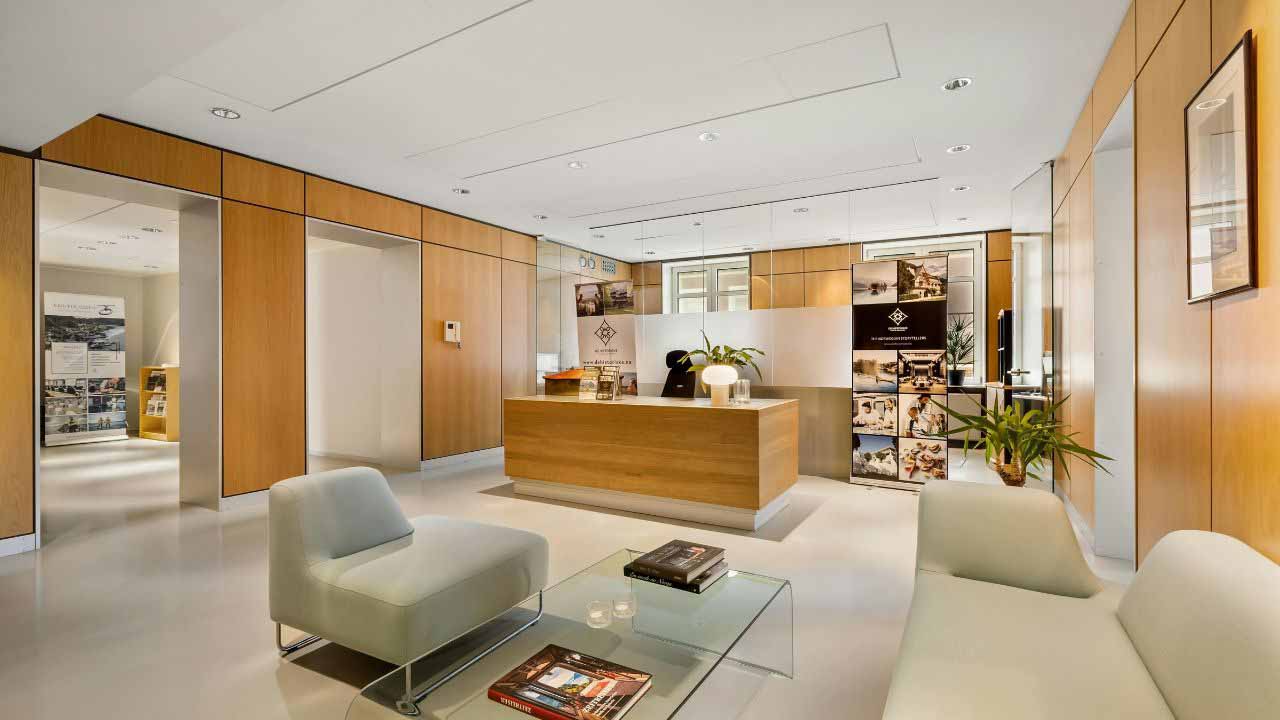
Our Wood Veneer Wall Panels are designed to be durable and low-maintenance, so you can enjoy their beauty without a lot of fuss. The high-quality UV protective coating we apply shields the finish from scratches and fading, ensuring your walls look stunning for years to come.
Routine care is simple and requires no harsh chemicals. With just a few basic steps, you can easily preserve the natural luster and warmth of your wood panels. Let’s go over the best way to keep your panels looking brand new.
Routine Cleaning and Long-Term Preservation
Keeping your Wood Veneer Wall Panels in pristine condition is easy. For routine cleaning, all you need is a soft, dry cloth to wipe away dust. This simple step is usually enough to maintain the beauty of the wood products and prevent buildup on the surface.
If you encounter any smudges or spots, you can lightly dampen a cloth with water and a non-abrasive, pH-neutral cleaner. It’s important to avoid harsh chemicals or abrasive sponges, as they can damage the protective finish on the wall panels.
For long-term preservation, follow these simple guidelines:
- Dust Regularly: Use a microfiber or other soft cloth to prevent dust accumulation.
- Clean Spills Promptly: Gently wipe any spills with a slightly damp cloth.
- Avoid Direct Sunlight: While our panels have a UV coating, minimizing prolonged, direct sun exposure helps preserve the wood’s color.
Conclusion
In conclusion, wood veneer wall panels are revolutionizing acoustic design in home offices by combining both aesthetic appeal and functionality. These modern wall panels not only enhance sound absorption but also bring warmth and character to your workspace. By addressing common noise challenges and offering eco-friendly choices, wood veneer panels stand out as a smart investment for productivity and style. As you consider your options, remember that the right finish and wood species can further personalize your space. If you’re ready to transform your home office with high-quality wood veneer wall panels, get quotes today and discover how our products can redefine your environment.
Frequently Asked Questions
Are wood veneer wall panels suitable for moisture-prone areas like bathrooms or kitchens?
We design our Wood Veneer Wall Panels for interior conditioned spaces only. Because they are made from real wood products, they are not recommended for high-moisture areas like bathrooms or kitchens where they could be exposed to direct water or steam. This can damage the veneer and the core material over time.
How do wood veneer wall panels compare to solid wood panels for durability and cost?
Our veneer wall panels are often more durable and cost-effective than solid wood. They are made with genuine wood veneers over a stable core that prevents the warping and twisting common with solid wood. This manufacturing process delivers the same luxurious look at a more accessible price point, making our wood products a smarter investment.
Do wood veneer wall panels come in customizable sizes and shapes?
Yes, absolutely! At Panneli, we specialize in customization. We can create tailor-made Wood Veneer Wall Panels to fit your unique design vision, whether for residential or commercial spaces. Our precision manufacturing allows us to produce veneer panels in various sizes and shapes to ensure a perfect fit for your interior design project.



